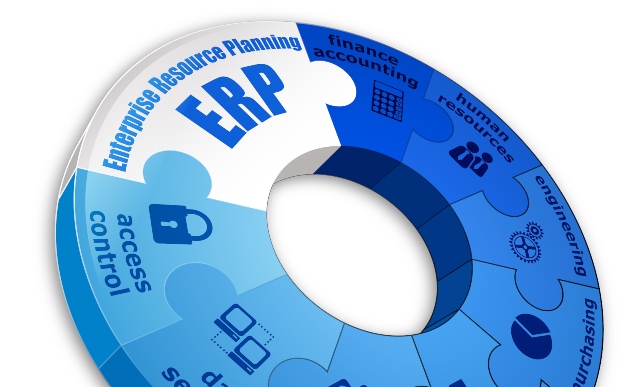Vodafone Sets New Benchmark on Its Intelligent Enterprise Journey with SAP S/4HANA Migration and Strategic Business Model
by Brianna Shipley, Senior Editor, SAPinsider
For decades, the telecommunications industry has molded the way people interact in the business world. Companies in this industry have evolved into digital service providers and competition has intensified. To stay ahead, leaders in this space must find a way to help organizations make the best use of their employees’ time and brainpower by shifting routine tasks from humans to automation.
With developments such as the Internet of Things (IoT), 5G technologies, machine learning, and artificial intelligence, telecommunications companies have the opportunity to not only empower others to move forward with digital transformations, but also undergo these transformations themselves to stay relevant. Vodafone Group — a multinational technology communications company responsible for digitally connecting more than 362 million mobile, fixed-line, and TV customers and organizations of all sizes — is one business that is realizing this for itself.
Vodafone is a leading technology communications provider running Europe’s largest 5G and fixed-line next-generation networks, and it is the continent’s second largest distributor of TV services. It also runs the world’s largest IoT network, connecting 103 million devices ranging from cars to lampposts. In 2019, Vodafone went live with one of the largest SAP S/4HANA implementations in the world with the aim of achieving increased process automation and standardization, faster month-end close, an improved user experience, and better data insights to support the company’s 93,000 employees. At the time of this publication, Vodafone will also be live with virtually all of SAP’s cloud-based line-of-business solutions.
Vodafone’s partnership with SAP began in 2006 when the company first embarked on a business transformation journey. Coined “EVO,” the company’s innovative program allowed Vodafone to operate as a global business and maximize the use of its shared services for finance, supply chain, and human resources (HR), all supported by a core business model in a single instance of SAP ERP Central Component (SAP ECC). More than a decade later, in 2017, when the question arose about who the company should partner with to enter the next digital era, for Vodafone, the obvious choice was to continue its relationship with SAP by migrating to SAP S/4HANA.
“We wanted to create key insights for our finance department and business users in each department. In the old system, this process was quite cumbersome, but with the new SAP Fiori user experience and new SAP Fiori-based analytical apps available in SAP S/4HANA, we knew with certainty that SAP’s latest ERP upgrade was the right way to go,” says Holger Grewe, Head of Corporate Transformation at Vodafone. Vodafone also partnered with Accenture as its system integrator for the SAP S/4HANA migration.
Building a Benefits-Driven Business Case
Grewe says the real challenge with building the business case was aligning middle management behind agreed upon, measurable key performance indicators (KPIs), including a Net Promoter Score for employees, an automation rate, and a standardization rate.
To do this, the organization needed to define business and IT transformation goals up front. “Clarity on drivers and a commitment from the project team to move this from A to B was key for all business stakeholders to buy in to the program,” says Grewe.
When it first implemented its initial SAP ECC system in 2006, Vodafone established a single version of the truth in the system, but over time encountered challenges as demands arose for real-time data and analytics capabilities. “Getting to the information in the single-instance ERP system was far too cumbersome,” says Grewe. “A lot of data was copied out of the system and further used and manipulated before people could look at the information.” This meant the system could not be relied on or consulted for simple and essential business tasks such as reviewing cost centers and comparing them to the financial plan, according to Grewe.
Determined to get results that would allow users to analyze real-time data in a flexible way with the new SAP Fiori apps available with SAP S/4HANA, and gain reliable and strategic insights, Vodafone moved forward with a strong business case and high expectations for the implementation.
Going Live on One of the Largest SAP S/4HANA Instances in the World in Just 18 Months
To keep up with changes in the telecommunications industry, Vodafone knew it needed to fully integrate automation and intelligence into its end-to-end business process to achieve operational efficiency and real-time capabilities. Vodafone transformed its single instance of SAP ECC in a two-step execution across 22 countries and more than 100 legal entities.
The first step of the journey was to change the database from Oracle to SAP HANA. The data migration was completed in November 2018. The second step was to convert the application layer from SAP ECC to SAP S/4HANA with SAP Fiori-based apps to address the needs defined in the business case created for the migration. The go-live of SAP S/4HANA was completed in November 2019, one year after the database migration, and three months of stabilization followed.
Accenture provided technical support during each step of the project, and it guided Vodafone’s internal IT colleagues in facilitating testing and workshops around the functionality using a traditional waterfall approach. SAP also played an integral role in the project by providing skilled support for building the best-in-class solution. “That makes it sound easy, but it wasn’t considering we’re talking about a single-instance solution utilized by more than 22 countries,” says Grewe.
Despite the daunting size of the project, Vodafone migrated one of the largest single SAP instances in the world to SAP S/4HANA in only 18 months with minimal business disruption.
To measure the success of the program, the company relied heavily on the KPIs it developed during the business case stage, and compared the progress of these metrics (which measured employee experience, automation, and standardization) against their pre-SAP S/4HANA baseline.
Vodafone used a traditional Net Promoter Score as a metric for evaluating the employee experience on the old system. As of the publication of this article, it is too soon to tell whether the experience has improved (Vodafone plans to measure this in mid-2020), but Grewe says that so far, change management has not been a challenge due to the improved user experience of SAP S/4HANA and moving activities to cloud solutions from SAP, such as from SAP SuccessFactors and SAP Ariba.
Because increased automation results in lower error rates and higher efficiency, Vodafone’s automation metric was particularly important for the company’s finance and IT operations processes. When comparing its target against baseline, it found that following the SAP S/4HANA migration, its automation rate increased significantly.
Another metric that helped Vodafone measure its progress was the amount of standardization it achieved. Vodafone’s SAP ECC instance included many customizations, which eventually resulted in a slow system, a cumbersome process to implement updates and enhancement packages, and a lot of regression testing. “It was important that we have more standardization in the next level to make everybody’s lives easier and the performance of the system better,” says Grewe. Vodafone increased standardization using the new system and was able to retire older custom code because the functionality it addressed was now standard delivered with the new system.
Vodafone now has nearly 12,000 professional users between its finance and supply chain management departments, and it has approximately 93,000 employees who are now using SAP Fiori launchpad for Vodafone’s SAP S/4HANA instance.
Part of what makes Vodafone’s most recent transformation so impressive is not only its ability to convert its single-instance SAP ECC system into one of the five largest SAP S/4HANA instances in the world in such a short period of time, but also its success in implementing multiple other SAP solutions in parallel with the SAP S/4HANA migration — including cloud solutions such as SAP Concur, SAP SuccessFactors, SAP Ariba, and SAP Fieldglass solutions — and integrating those solutions with SAP S/4HANA.
Successful Integration Puts Vodafone Ahead of the Curve
Vodafone wanted to take full advantage of the innovation and reporting capabilities across these SAP platforms, which required integrating these solutions with SAP S/4HANA. Some of the solutions that the business was implementing in parallel with SAP S/4HANA were so new that standard integration was still under development, which added complexity to the analysis and design phase of the project, according to Grewe. For example, standard integrations did not yet exist for creating a single inbox where managers could view their work list or outstanding approvals, rather than having to check five different solutions for the information.
“Each solution contains different data models, and we needed a common denominator to ensure that we could mix and match the data to produce meaningful information,” he says. “To enable this, you need to have the right architecture and the right products, and SAP assured us it was working diligently on its side to create the new standard integrations. SAP kept us up to date on those developments to ensure our integrations followed the future architecture that SAP is now creating, so we wouldn’t need to rebuild everything after going live,” says Grewe.
Because Vodafone was replacing only parts of its existing functionality with each of the cloud solutions from SAP (as opposed to replacing the core system, as was the case with SAP S/4HANA), it did not have to go live all at once. Each project rollout took a slightly different approach, with Vodafone’s finance function, led by Grewe, responsible for running SAP Concur and SAP Fieldglass; Vodafone’s HR function responsible for running SAP SuccessFactors; and Vodafone’s supply chain function responsible for running SAP Ariba.
SAP Concur replaced functionality that Vodafone previously had in two different systems. In the old environment, travel booking was done through a third-party system and expense management was handled in a core SAP system. The company replaced this functionality with SAP Concur country by country over a nine-month period. “The last piece went live two months after the last piece of the core SAP S/4HANA system went live, and it proved to be a very good implementation strategy. SAP Concur as a product is quite mature. We started to deploy it in two markets as a pilot, and we then increased the number of markets for release every quarter,” says Grewe.
Vodafone’s HR organization took a different approach to replacing its core system with SAP SuccessFactors by implementing a mix between a country-by-country rollout approach and a central functionality setup. “If you want to replace the system, you also need to replace the central functionality from the older system. HR built core functionality for everybody and rolled it out market by market. This took two years, the same amount of time as the SAP S/4HANA migration.”
When replacing its old supply chain system with SAP Ariba, the team started with sourcing, which worked well, then rolled it out to a footprint of markets, and then started adding functionality, such as guided buying. This implementation project team is still working closely with SAP as the product has yet to reach the right level of maturity for rollout at Vodafone.
Last, but not least, SAP Fieldglass is approaching full functionality in Vodafone’s largest market, which is in Germany. One of the key drivers to implement SAP Fieldglass is to ensure reporting capabilities and compliance around external workforce management.
Cost Savings Prove the Impact of SAP S/4HANA on Sustainability and Its Evolutionary Potential for the Telecommunications Industry
Migrating to SAP S/4HANA has delivered a platform that moves Vodafone closer to its goal of embedding machine learning and artificial intelligence functionality to increase its automation rates even further. The company has also experienced significant cost savings as a result of the upgrade.
Grewe knows that SAP S/4HANA will continue to evolve. “New functionality becomes available with every new release cycle that SAP has, so we want to stay on top of that cycle and make the best use of the new software elements that are coming. Our next upgrade is planned for November 2020 to move to the next release version of SAP S/4HANA.”
When it comes to lessons learned, having clarity on the business achievements you want to realize with an upgrade is a huge takeaway from Vodafone’s latest digital transformation project. “I come back to the KPIs that we wanted to move dramatically to enable the business to become more effective and efficient,” he says. “If you have a very KPI-driven business case, you’ll get support from middle management, who you need to deliver the benefits, as well as top management, who are interested in making an investment and payback as quickly as possible.”







